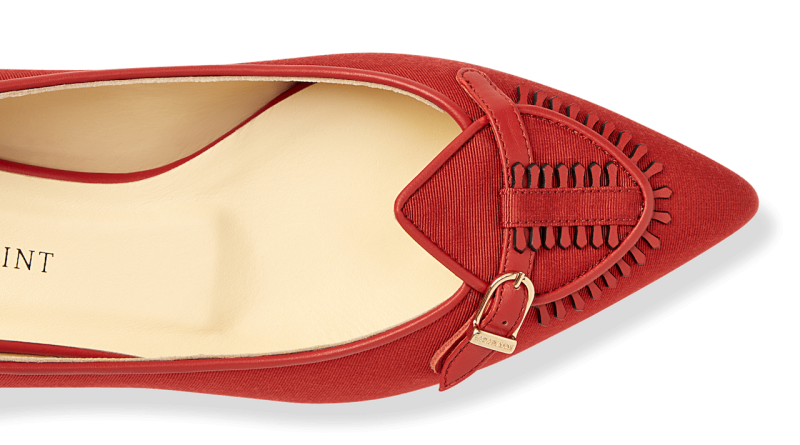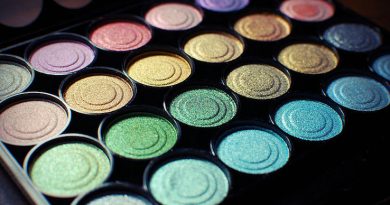Are heels over? What the footwear market will look like post-coronavirus – Glossy
Footwear collections are looking considerably more casual and comfort-focused this summer, as brands pivot to cater to consumers’ new work-from-home lifestyles. Dress shoe sales, on the other hand, have suffered considerably; the segment dropped 71% in the second quarter, compared to last year, according to research firm NPD Group.
But footwear brand founders, including Sarah Flint, say it’s not the end of the line for heels.
“Despite the overwhelming shift toward casual dressing, our pumps are still our top-selling category,” said Flint. She owed it to that “consumers are making more emotional purchases right now and buying things that bring them joy.”
Even prior to the pandemic, comfort has been a key selling point for the brand’s pumps, which offer an expanded toe box and 6 millimeters of extra padding. They’re made “for women to live their real lives in, without sacrificing style,” Flint said. Since the lockdowns started in March, however, the penetration of total sales has doubled for flats. What’s more, the brand’s sandals have had record sales as consumers have sought out more practical wardrobe options.
“This isn’t going away anytime soon,” said Flint. “Once people start dressing for comfort, it’s hard to go back — so it’s been a huge advantage to have that element of comfort built into our DNA.”
This shift toward comfort was already in motion before the pandemic, in line with the athleisure and casual wear trends in the broader fashion industry and in workplaces. NPD analyst Beth Goldstein told Bloomberg that the dress shoe segment may never fully recover, as sales were already down 12% in 2019. Adam Tucker, president of Me Too Shoes, a women’s footwear brand sold at retailers including Nordstrom, told Fox Business that dress shoes made up only 10% of his business before Covid-19, and that’s since dipped to less than 5%.
Steve Madden CEO Edward Rosenfeld said on an earnings call in July that some of the retailers the company works with are “stuck with excess dress shoe inventory.”
“We’ve had a lot of success, and we’re continuing to see a lot of success, with our flat sandals,” Rosenfeld said. “And as we go into fall, we’re pretty focused on sneakers and casual boots.”
Capri Holdings’ Jimmy Choo is also leaning into sneakers, with John Idol, CEO of Capri Holdings, noting on an August 5 earnings call that the brand’s new Hawaii Trainer is “just on fire for the company.”
“Luxury always had a very big sneaker business, but we traditionally did not,” he said. “In Jimmy Choo, you can see we’ve made really incredible strides in that.”
“Really, the dress shoe business, in general, is under pressure,” he added.
On March 8, when direct-to-consumer footwear brand Margaux introduced a mule as part of its Gal Meets Glam spring collaboration, it rapidly unseated a heel style as the brand’s top seller — a spot it held for all of March, April and May. To keep up with demand, co-founders Alexa Buckley and Sarah Pierson had to reorder the style from the brand’s factory four times post-launch. Just over three quarters of the pairs that were sold went to first-time customers.
The style’s success prompted Margaux’s founders to launch a mule outside of a collaboration last month. It comes in three colorways, and each shoe comes topped with an oversized bow.
Pierson said that Margaux customers have been shopping more intentionally and carefully since the start of the pandemic, but they’re also veering toward more prints, pastels and fanciful styles than ever before.
“Previously, a lot of customers, especially our urban professional customers, were very practical,” she said. “We sold tons of [shoes in] black, navy, nudes and other neutrals. But, all of a sudden, we saw an immediate uplift in the sales of shoes with pop colors and prints — the novelty items we had in the product mix. Customers were shopping less, but what they were looking for when they did buy an item was for it to really bring them joy.”
Pierson noted that the shift was in line with other trends in fashion: “Whether it’s tie-dye or bucket hats or bike shorts — [people are shopping] things that are fun and lighthearted, and that give them the same feeling when they put it on.”
Sarah Flint is planning to launch a slipper this fall, which it’s labeling a “house shoe,” as part of a Cozy Interiors collection. Flint’s team was planning for the collection prior to the pandemic, but the slipper was a later addition, said Flint. The collection also includes an all-purpose boot, a sleek heel and a flat.
“Fortunately, we didn’t need to do much in terms of editing [the collection],” said Flint. “But that’s not to say that we haven’t listened to our customers and to the current market, and made additions and revisions where necessary.”
While there are still plenty of unknowns at play, when it comes to the future of footwear, Flint is optimistic.
“Whether they’re purchasing pumps for a rainy day or dressing up for a socially distanced night out, women are still — and always will be — in the market for a great pair of heels,” she said.



:quality(70)/cloudfront-eu-central-1.images.arcpublishing.com/businessoffashion/UR5OTG2ECRBNRHXSKNWIRHS3QE.jpg)